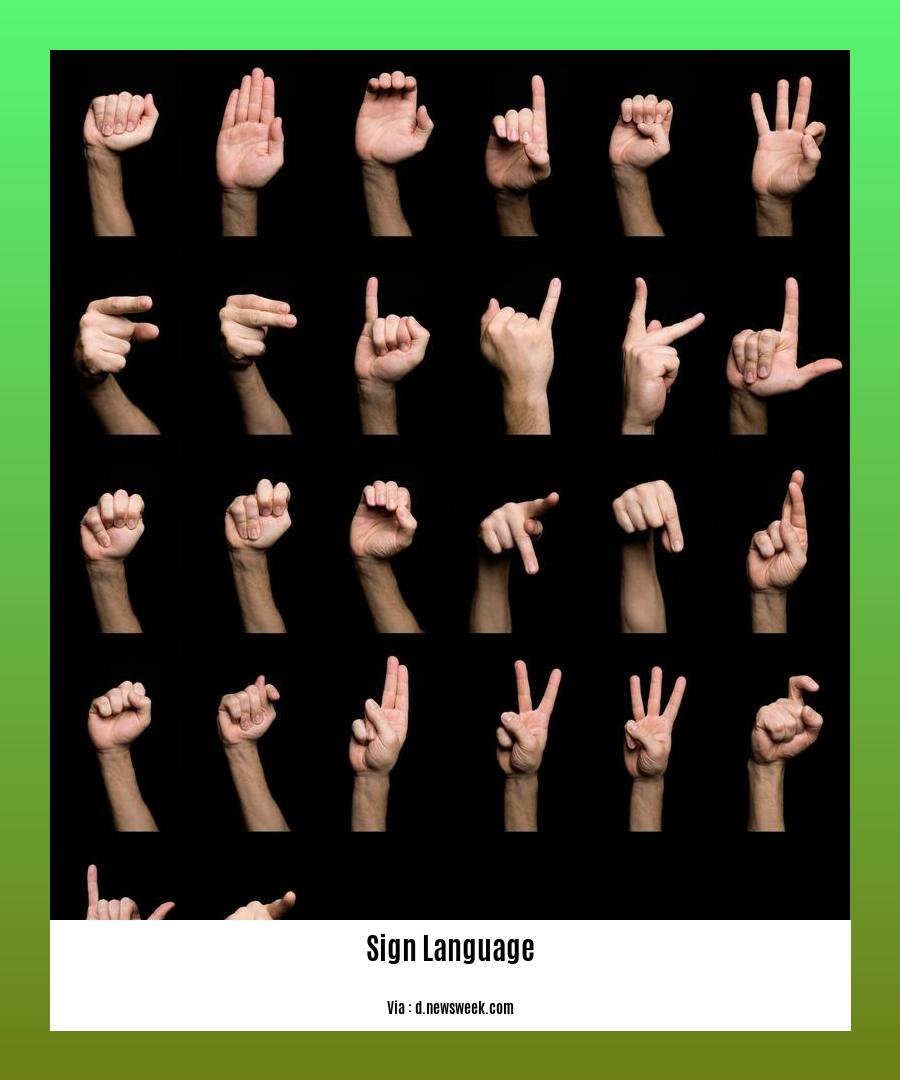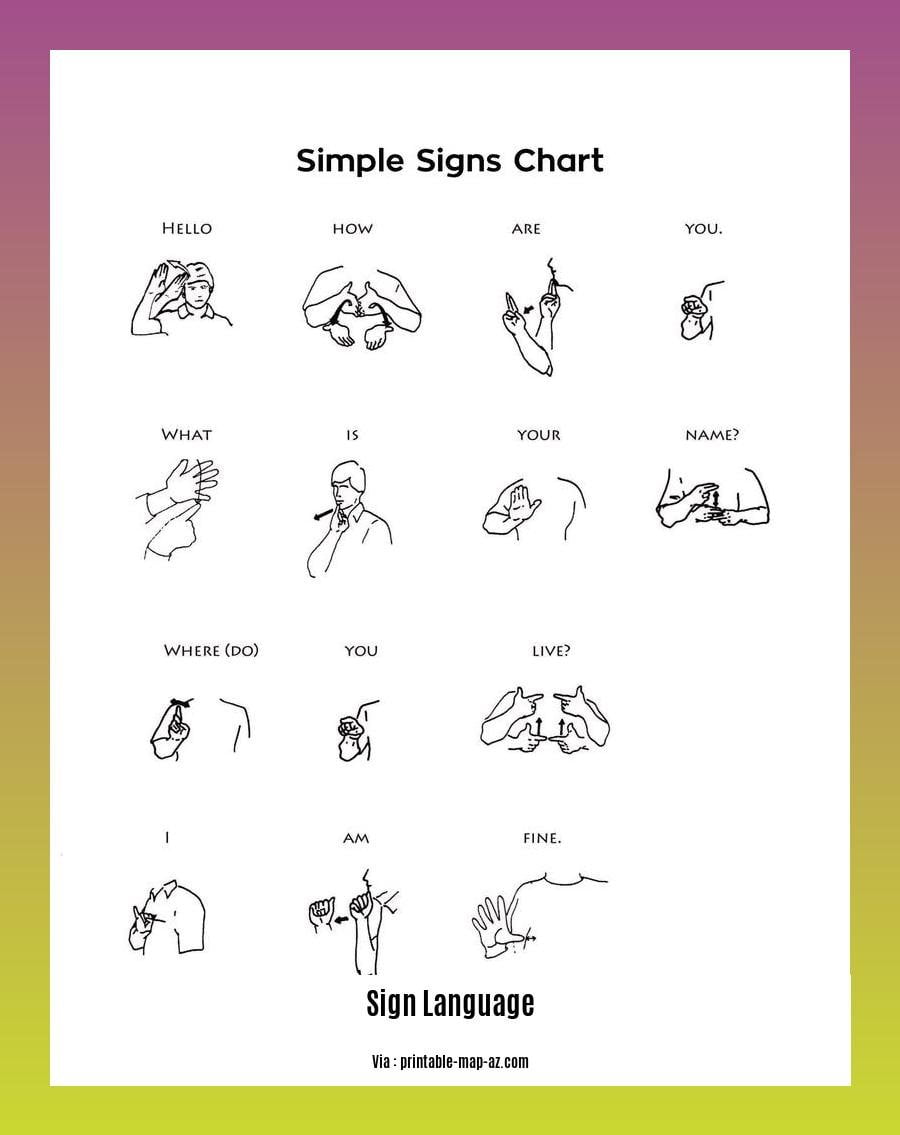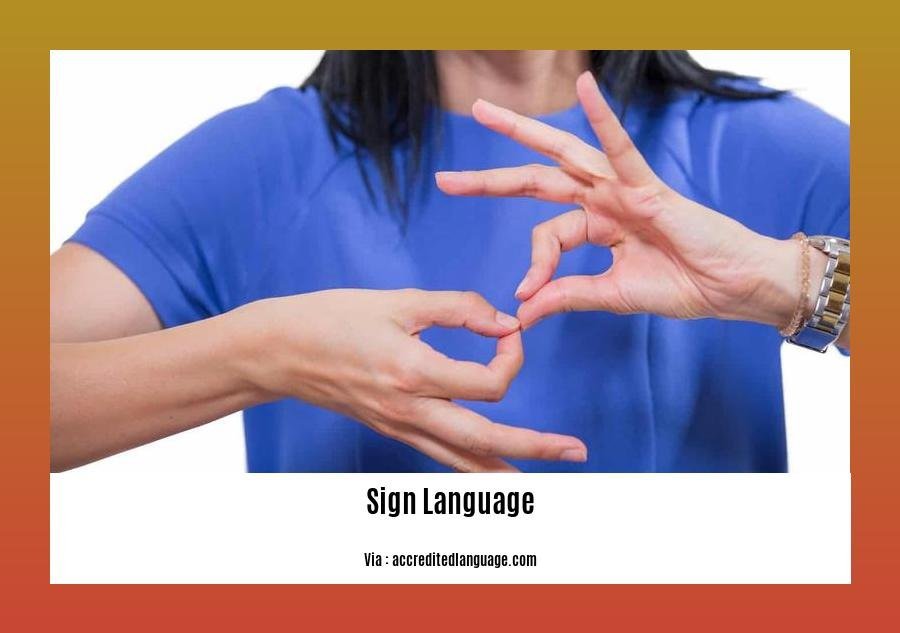Discover a world of wonder as we delve into the fascinating facts about sign language and explore how it serves to bridge the gap between the Deaf and hearing worlds. From its rich history and evolution to its intricate nuances as a distinct language system, sign language captivates and enlightens. Join us on this captivating journey as we unveil the hidden treasures and dispel the myths surrounding this unique form of communication.
Key Takeaways:
- American Sign Language is not universal, with over 300 different sign languages used globally.
- The World Federation of the Deaf estimates that 70 million people worldwide use sign language as their primary means of communication.
- Sign language is essential for the Deaf community and carries their unique culture.
- Sign language varies from country to country due to its natural development among different groups and over time.
- The high demand for sign language interpreters reflects the large number of people who use sign language.
- Sign language is based on the principle that sight is the most useful tool for communication among deaf individuals.
- Between 138 and 300 different sign languages are in use globally.
- It is crucial to have knowledge and awareness of different sign languages and their variations.
Facts About Sign Language

Sign language is a fascinating and diverse form of communication that plays a crucial role in bridging the gap between the Deaf and hearing worlds. Let’s delve into some enlightening facts about sign language that will open our minds to the complexities and beauty of this unique language system.
Sign Language is Not Universal
Contrary to popular belief, sign language is not universal. In fact, there are over 300 different sign languages used globally. Each country and even regions within countries have their own sign language that developed naturally within their Deaf communities. This diversity showcases the richness of human communication and highlights the importance of recognizing and valuing linguistic and cultural differences.
Sign Language and the Deaf Community
For over 70 million people worldwide, sign language is their primary means of communication. Sign language not only facilitates day-to-day interaction, but it also carries the cultural identity of the Deaf community. It is the embodiment of their shared history, values, and experiences. By understanding sign language, we can deepen our understanding of Deaf culture and foster meaningful connections with the Deaf community.
Sign Language is Based on Sight
Sign language is founded on the principle that sight is the most useful tool for deaf individuals in communication. Instead of relying on spoken words and auditory cues, sign language uses a combination of handshapes, facial expressions, and body movements to convey meaning. By harnessing visual cues, sign language provides a unique and effective way for deaf individuals to express themselves and engage in meaningful conversations.
Sign Language Interpreters in High Demand
Given the large number of people who use sign language as their primary mode of communication, there is a significant demand for sign language interpreters. These professionals play a critical role in facilitating communication between Deaf individuals and the hearing world. They act as bridges, conveying spoken language into sign language and vice versa. The demand for sign language interpreters highlights the importance of inclusivity and accessibility in various settings, such as education, healthcare, and public events.
The Evolution of Sign Language
Sign language is not a static language but has evolved naturally over time within different communities. It has been influenced by cultural shifts, regional nuances, and individual experiences. These factors contribute to the development of distinct sign languages in different countries and regions. Just as spoken languages evolve, sign languages continue to grow and adapt, reflecting the dynamic nature of human communication.
Did you know? There are between 138 and 300 different sign languages used globally today. Each sign language has its own grammar, vocabulary, and unique characteristics, making them distinct and fascinating to explore.
Knowledge and Awareness
In order to foster understanding and inclusivity, it is essential to have knowledge and awareness of different sign languages and their variations. By educating ourselves about sign languages, we can break down communication barriers and create a more inclusive and equitable society. Understanding the unique features of sign languages allows us to appreciate the linguistic diversity that exists within our world.
Conclusion
Sign language is a captivating and multifaceted language system that connects the Deaf and hearing worlds. By uncovering these intriguing facts about sign language, we can gain a deeper appreciation for its beauty and complexity. Let us embrace the richness of sign language and continue to bridge the gap between different communities through open-mindedness, acceptance, and inclusive communication.
Here are some fascinating facts about Indian weddings. Learn more about the rich traditions and customs celebrated in these joyous occasions by clicking here.
Explore the enchanting world beneath the water’s surface and discover intriguing facts about life below water. Dive into the deep blue by clicking here.
Delve into the history and achievements of the Liverpool football team. Uncover interesting facts about their glorious past by clicking here.
Indulge in the flavors and culture of Mexican cuisine by exploring these interesting facts about Mexican food. Spice up your knowledge by clicking here.
Varieties of Sign Language

Sign languages are diverse and unique communication systems used by deaf and hearing-impaired individuals around the world. Each country has its own sign language, with different signs and ways of expressing ideas and emotions. In this article, we will explore some fascinating facts about the varieties of sign language and their cultural significance.
American Sign Language (ASL)
American Sign Language (ASL) is one of the most widely used sign languages in the United States and Canada. It has its own distinct grammar and syntax, with over 250,000 to 500,000 native users. ASL incorporates hand signs, facial expressions, and body movements to convey meaning, making it a complex and rich language.
(Source: InterpretCloud)
British Sign Language (BSL)
British Sign Language (BSL) is the primary sign language used in the United Kingdom. It is closely related to Auslan (Australian Sign Language) and New Zealand Sign Language. BSL includes several dialects and has approximately 150,000 native users.
(Source: InterpretCloud)
Other Notable Sign Languages:
- French Sign Language (LSF): LSF is primarily used in France, Belgium, and some parts of Canada. It has approximately 100,000 native users worldwide.
- Chinese Sign Language (CSL or ZGS): CSL is used by millions of deaf people in China. It utilizes hand signs, facial expressions, and body movements to convey meaning.
- Japanese Sign Language (JSL): JSL is the sign language used in Japan. It has its own unique grammar and vocabulary.
- Indian Sign Language (ISL): ISL is used by the deaf community in India. It has regional variations and is influenced by both Indian and British sign languages.
Sign languages have their own linguistic structures and family histories. Each sign language has its own phonology, poetry, and unique characteristics. Despite their differences, sign languages also share some typological features due to their shared manual production.
It is estimated that approximately 70 million people worldwide use sign language for communication. Sign language is not only a means of communication but also an integral part of Deaf culture and identity.
Key Takeaways:
– Sign languages are diverse and vary from country to country.
– American Sign Language (ASL) and British Sign Language (BSL) are two widely used sign languages.
– Other notable sign languages include French Sign Language (LSF), Chinese Sign Language (CSL or ZGS), Japanese Sign Language (JSL), and Indian Sign Language (ISL).
– Sign languages have their own linguistic structures, phonology, and unique characteristics.
– Sign language is not universal, and understanding different sign languages promotes inclusivity and appreciation for linguistic diversity.
(Source: InterpretCloud, Wikipedia)
Structure and Grammar of Sign Language
Sign languages have a unique and fascinating structure and grammar that sets them apart from spoken languages. Understanding the intricacies of sign language can help bridge the gap between the Deaf and hearing worlds. In this article, we will explore the structure and grammar of sign language, shedding light on its distinct features and providing insights into its linguistic organization.
The Hierarchical and Recursive Organization
Sign languages, like spoken languages, have a hierarchical and recursive organization in their clauses. This means that signs can be combined to form more complex expressions, with different levels of information embedded within a single sign. Just like spoken languages, sign languages allow for the creation of new words and expressions through affixes, compounding, and other rules of word formation [^1^].
Universality of Constraints on Syntactic Movement
General constraints on syntactic movement also apply to sign languages, highlighting the universality of these constraints across different modalities. This means that sign languages adhere to similar rules regarding the ordering and movement of words and phrases within a sentence. This further supports the view that sign languages and spoken languages share underlying linguistic structures [^1^].
Sign Language Phonology
Sign language phonology explores a wide range of structures, including phonetics, gesture, lexicon, and morphology. Just like spoken languages, sign languages have their own distinct set of phonemes, which are the smallest units of distinctive sound. These phonemes can be combined to form signs, with variations in handshape, movement, location, and orientation contributing to the formation of different signs [^2^].
SignWriting: A Phonetic Representation System
SignWriting is a system that represents sign languages phonetically, capturing not only the hand movements but also the facial expressions, mouthing, and dynamics of movement involved in signing. It provides a detailed and comprehensive way of transcribing sign languages and has been instrumental in documenting and analyzing various sign languages around the world [^1^].
Sign Language Grammar: Beyond Traditional Categories
Sign languages have their own unique grammar, which may have aspects that resist traditional linguistic categories. However, this does not necessarily contradict universalist approaches to language. Sign language grammar is constantly being studied and analyzed at various levels to better understand the relationship between linguistic structure and modality [^2^].
Visual Communication and Deaf Culture
Sign language is a visual communication system used by deaf individuals. It is not simply a tool for conveying information; it plays an integral role in Deaf culture and identity. Sign languages vary in their linguistic structures and family history, but they also share typological features due to their shared biology. It is estimated that sign language is the primary means of communication for over 70 million people worldwide [^5^].
Key Takeaways:
- Sign languages have a hierarchical and recursive organization, allowing for the combination of signs to form more complex expressions.
- Constraints on syntactic movement apply to sign languages, indicating that they share underlying linguistic structures with spoken languages.
- Sign language phonology explores the structures of phonetics, gesture, lexicon, and morphology.
- SignWriting is a system that phonetically represents sign languages, capturing the intricacies of hand movements, facial expressions, and other elements of signing.
- Sign language grammar may have aspects that resist traditional linguistic categories but can still be studied and analyzed to understand the relationship between linguistic structure and modality.
- Sign language is a visual communication system used by deaf individuals and is an integral part of Deaf culture and identity [^1^] [^5^].
The Role of Sign Language in Deaf Culture
Sign language holds immense importance in deaf culture, playing a vital role in communication, identity, community, and education. It is a visual language that utilizes hand gestures, body language, and facial expressions to convey meaning. Let’s delve into the fascinating facts about sign language and how it bridges the gap between the deaf and hearing worlds.
Sign Language: A Language of Communication and Connection
One of the most significant aspects of deaf culture is the use of sign language. It serves as a primary mode of communication for many deaf individuals and allows them to express themselves fully and effectively. It fosters connection and understanding among members of the deaf community, creating a sense of belonging and shared experiences.
Cultural Significance and Identity
Sign language not only enables communication but also plays a crucial role in deaf individuals’ cultural identity. Those who identify as culturally Deaf often have a strong connection to Deaf culture and utilize sign language as their primary means of communication. Sign language serves as a common thread that unites the deaf community, promoting cultural pride and awareness.
Education and Social Inclusion
In the education of young deaf individuals, sign language is of utmost importance. Its recognition and use in schooling contribute to their educational growth and development. Sign language facilitates social inclusion, allowing young deaf people to learn reading and writing effectively.
Distinct Language Characteristics
Sign language is not merely a visual representation of spoken language. It has its own unique grammar, syntax, and cultural nuances. For example, American Sign Language (ASL) has its rich linguistic tradition, with its own history and vibrant usage in the United States and Canada. Understanding the distinct linguistic characteristics of sign language promotes inclusivity and appreciation for its diversity.
Promoting Cultural Pride and Understanding
By recognizing sign language as a legitimate language with its own rules and cultural significance, society can raise awareness about Deaf culture and promote cultural pride among both deaf and hearing individuals. Embracing sign language’s richness helps bridge the gap between different communities and fosters a more inclusive society.
Key Takeaways:
- Sign language is the primary mode of communication for many deaf individuals, fostering connection and understanding within the deaf community.
- Sign language plays a crucial role in the cultural identity of deaf individuals, promoting cultural pride and awareness.
- Recognizing sign language in education contributes to the social inclusion and educational growth of young deaf people.
- Sign language has its own distinct linguistic characteristics, representing a unique language system with its grammar, syntax, and cultural nuances.
- Embracing and recognizing the significance of sign language can bridge the gap between the Deaf and hearing worlds, promoting inclusivity and understanding.
URL Sources:
– The Importance Of Sign Language In Deaf Culture – ICPHS
– Understanding Deaf Culture, the Deaf Community, and American Sign Language
FAQ
Q1: How many different sign languages exist globally?
A1: There are over 300 different sign languages used worldwide, with sign language varying from country to country due to natural development and evolution.
Q2: How many people use sign language for communication?
A2: It is estimated that there are approximately 70 million people worldwide who use sign language as their primary means of communication.
Q3: Why are there variations in sign languages between countries?
A3: Sign languages developed naturally in different groups of people and have evolved over time, leading to variations in signs and ways of communicating.
Q4: Why is sign language important in the deaf community?
A4: Sign language is the primary means of communication for the deaf community and carries the culture of the Deaf community. It allows deaf individuals to fully express themselves and participate in various aspects of society.
Q5: What is the demand for sign language interpreters?
A5: Due to the large number of people using sign language, there is a high demand for sign language interpreters to facilitate communication between the Deaf and hearing worlds.
















